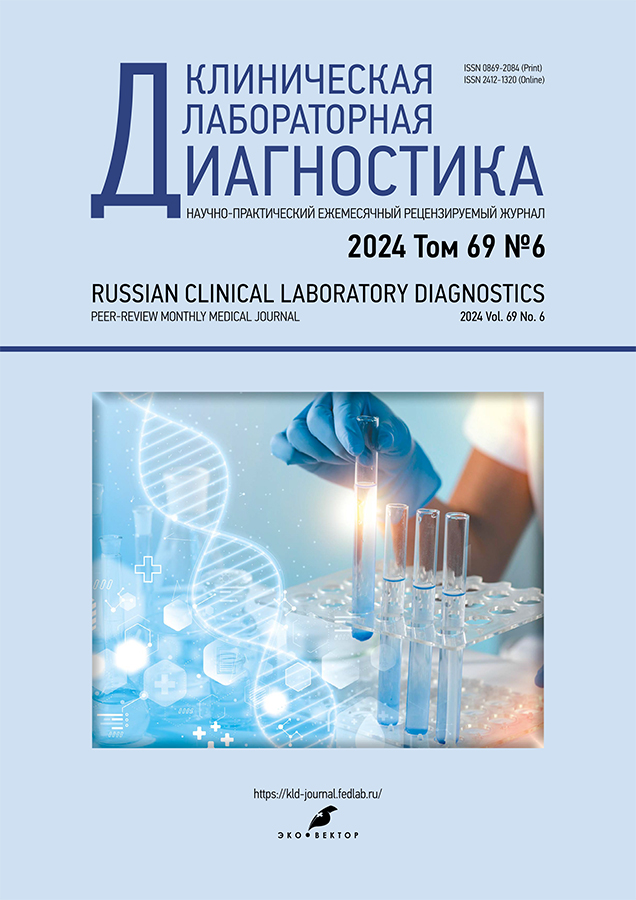Role of leadership style selection and management in clinical diagnostic laboratory management: A short review
- Авторлар: Fedorova M.M.1, Abramova O.A.2, Roytman A.P.1, Godkov M.A.1,3
-
Мекемелер:
- Russian Medical Academy of Continuous Professional Education
- Higher School of Economics
- Sklifosovsky Research Institute For Emergency Medicine
- Шығарылым: Том 69, № 6 (2024)
- Беттер: 14-22
- Бөлім: Reviews
- ##submission.datePublished##: 25.05.2024
- URL: https://kld-journal.fedlab.ru/0869-2084/article/view/629420
- DOI: https://doi.org/10.17816/cld629420
- ID: 629420
Дәйексөз келтіру
Аннотация
The study focuses on the role of the head of the laboratory in terms of management and leadership. The choice of leadership and management style is important in the management of a clinical diagnostic laboratory. Each style has its advantages and disadvantages, and the selection of a specific style depends on the goals, tasks, and characteristics of the healthcare facility. An authoritarian leadership style can be effective when fast decision-making is needed or during crisis; however, it may cause dissatisfaction among employees and lead to conflicts. Conversely, a democratic leadership style allows for the consideration of the opinions and suggestions of all participants, which contributes to increased motivation and improved teamwork; however, it may require more time when making decisions. Leadership styles can be combined, for example, the situational leadership style, which is effective for creating and introducing innovations in an organization. Thus, the specific characteristics of the clinical diagnostic laboratory, such as its size, number of employees, complexity of the processes, technologies used, and quality of management system requirements must be considered for reproducibility and accuracy of results. For example, if the laboratory is a centralized organization with many departments, implementing a combination of different leadership styles depending on specific tasks may be effective. The choice of leadership and management styles for managing a clinical diagnostic laboratory should be based on an analysis of the situation, needs and goals of the organization, and manager’s personality and should consider the opinions and preferences of its employees. Identifying employees with leadership potential and investing in their training in the hospital will help create future leaders.
Негізгі сөздер
Толық мәтін
Авторлар туралы
Margarita Fedorova
Russian Medical Academy of Continuous Professional Education
Хат алмасуға жауапты Автор.
Email: mm_f@mail.ru
ORCID iD: 0009-0002-5457-2752
SPIN-код: 9766-5270
MD, Cand. Sci. (Medicine), Assistant Professor
Ресей, MoscowOlga Abramova
Higher School of Economics
Email: oabramova@hse.ru
ORCID iD: 0000-0003-4845-3511
SPIN-код: 4008-6761
Cand. Sci. (Psychology)
Ресей, MoscowAlexandr Roytman
Russian Medical Academy of Continuous Professional Education
Email: a-roitman@mail.ru
ORCID iD: 0000-0003-2592-6857
SPIN-код: 5400-7815
MD, Dr. Sci. (Medicine), Professor
Ресей, MoscowMikhail Godkov
Russian Medical Academy of Continuous Professional Education; Sklifosovsky Research Institute For Emergency Medicine
Email: mgodkov@yandex.ru
ORCID iD: 0000-0002-0854-8076
SPIN-код: 4871-6150
MD, Dr. Sci. (Medicine), Professor
Ресей, Moscow; MoscowӘдебиет тізімі
- Yenice S, Orth M, Randell E, Khine A. Leadership basics for clinical laboratory professionals. IFCC Committee on clinical laboratory management. IFCC; 2019.
- Savinova SYu, Vasil'eva EN. Business Leadership: textbook and practice for universities. Moscow: Urait; 2023. (In Russ).
- Shalunova M. Personal Effectiveness: A Training Manual. Moscow: Al'pina Pablisher; 2016. (In Russ).
- Weiss RL. The Role of the Laboratory Medical Director: Responsibilities, Expectations, and Challenges. ASCP Annual Meeting/WASPaLM XXVI World Congress; 2011 Oct; Las Vegas, NV. Available from: http://dn3g20un7godm.cloudfront.net/2011/AM11SA/141.pdf Accessed 2018 Dec 18.
- Leadership and management. In: Operations manual for delivery of HIV prevention, care and treatment at primary health centres in high-prevalence, resource-constrained settings. Geneva: World Health Organization; 2008. P:264–281.
- Bass B, Avolio B, Jung D, Berson Y. Prediction unit performance by assessing transformational and transactional leadership. Journal of applied psychology. 2003;88(2):207–218. doi: 10.1037/0021-9010.88.2.207
- Andersen E. Are leaders born or made? 2012 Nov 21 [cited 2023 Sep 25]. In: Forbes [Internet]. Forbes Media LLC. c2024. Available from: https://www.forbes.com/sites/erikaandersen/2012/11/21/are-leaders-born-or-made/#63abb20d48d5
- Lord RG, Day D, Zaccaro S, Avolio B, Eagly A. Leadership in Applied Psychology: Three Waves of Theory and Research. Journal of applied psychology. 2017;102(3):434–451. doi: 10.1037/apl0000089
- Lewin K, Lippit R, White RK. Patterns of Aggressive Behaviour in Experimentally Created “Social Climates”. Journal of social psychology. 1939;10(2):271–301. doi: 10.1080/00224545.1939.9713366
- Liden R, Panaccio A, Meuser J, Hu J, Wayne S. Servant leadership: Antecedents, processes, and outcomes. In: David VD, editor. The Oxford handbook of leadership and organizations. New York, NY: Oxford Press; 2014. P:357–379. doi: 10.1093/oxfordhb/9780199755615.013.018
- Greenleaf R. Servant leadership: A journey into the nature of legitimate power and greatness. Mahwah, NJ: Paulist Press; 1977.
- Likert R. New Patterns of Management. New York: McGraw-Hill; 1961.
- Wang Q, Hou H, Li Z. Participative Leadership: A Literature Review and Prospects for Future Research. Frontiers in Psychology. 2022;13. doi: 10.3389/fpsyg.2022.924357
- Giltinane CL. Leadership styles and theories. Nursing standard. 2013;27(41):35–39. doi: 10.7748/ns2013.06.27.41.35.e7565
Қосымша файлдар








